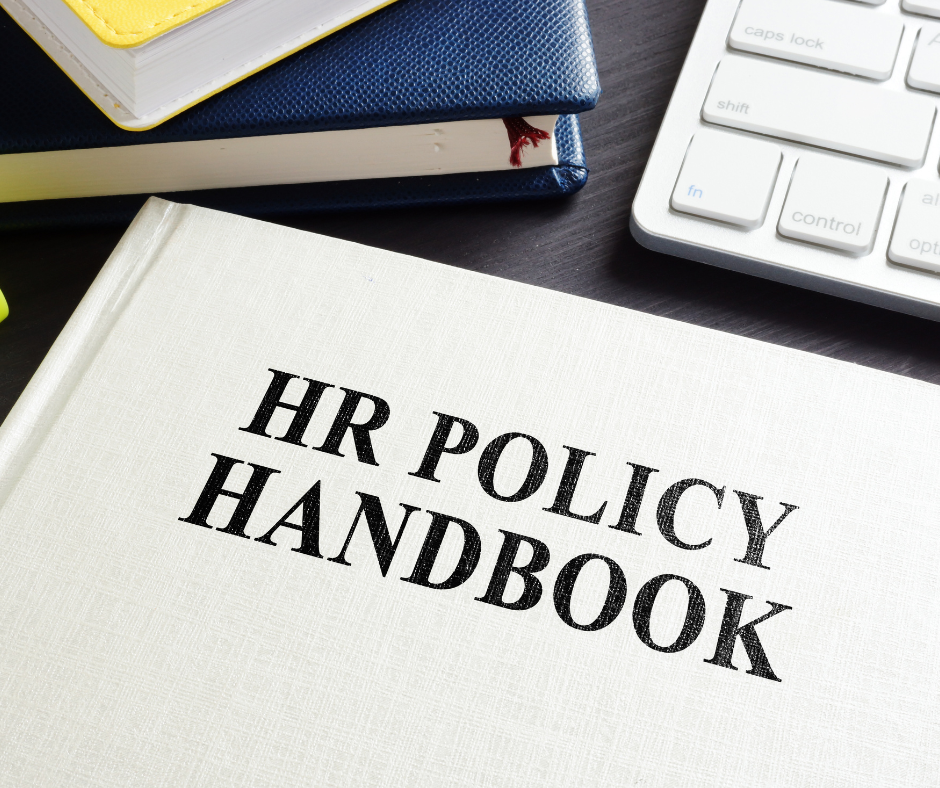
In today’s rapidly changing business landscape, having well-structured and compliant HR policies and procedures is crucial for the success of any organization. They serve as the backbone of a company’s human resources management, guiding employee behavior, fostering a positive work environment, and ensuring compliance with regulations. An HR policy and procedures template can be a valuable resource for organizations looking to develop or update their policies. But how can these templates be customized to fit an organization’s unique needs and culture? Read on to find out.
Key Takeaways
- Understanding HR Policies and Procedures is essential for guiding employee behavior, increasing communication, promoting equitable treatment, improving transparency.
- Downloadable HR Policy and Procedure Templates provide organizations with a strong structure to create tailored policies while ensuring compliance with relevant laws.
- Organizations should implement training and regular reviews of their policies to ensure effectiveness in fostering an engaged workplace that is compliant with applicable regulations.
Understanding HR Policies and Procedures
HR policies and procedures serve several important functions in an organization.
- They guide employee behavior and ensure compliance with employment laws.
- They facilitate communication between the employer and employee by outlining guidelines.
- They promote equitable treatment for all employees.
- They increase transparency in work processes and reduce misunderstandings.
- They contribute to the long-term success of a business.
A well-crafted HR manual template can serve as a starting point for creating these policies, providing a foundation for organizations to build their own policies tailored to their specific needs and requirements. For example, Employee Confidentiality and Conflict of Interest policies are fundamental HR policies that can be adapted from HR policies samples to suit the organization’s unique circumstances.
Key Components of HR Policies
HR policies of a company are designed by HR professionals to establish basic rules that protect employees, ensure legal compliance, and create a safe and productive workplace. They encompass various elements of the workplace, such as:
- Recruitment and onboarding
- Performance management
- Employee benefits
- Workplace safety and health
- Termination and offboarding
- Training and communication
- Regular review and updates.
Effective implementation of HR policies involves education, communication, and regular reviews and updates. For instance, a policy about employees using their own devices in the workplace needs clear communication and frequent reviews to keep pace with the changing needs of the organization and its employees.

Essential HR Procedures
HR procedures support policies by providing clear and actionable steps for implementing them. For instance, a hiring policy establishes the recruitment process for prospective employees within the organization, following different guidelines depending on the company’s needs and requirements. An employee referral policy incentivizes employees to refer qualified candidates for open positions, with non-compliance resulting in the loss of referral incentives.
Other essential HR procedures include:
- Job rotation
- Computer use
- Contractor policies
- Internal job posting
- Travel policies
- Leave policies
- Business expense reimbursement
- Sick leave policies
These procedures serve as formal rules, providing employees with guidelines for various aspects of their work, ensuring a smooth and efficient work environment while reducing the risk of misunderstandings and conflicts.
Customizing HR Policy Templates for Your Organization
HR policy templates serve as a reference for constructing an organization’s policy framework, providing a comprehensive solution that saves time and effort. By customizing these free HR policies templates, organizations can tailor their policies to align with their company culture, values, and goals, addressing any unique challenges or situations they may face. Utilizing an HR policies sample can further assist in the customization process.
Customizing HR policy templates also helps guarantee compliance with applicable laws and regulations, as well as industry best practices. Organizations should:
- Evaluate the template to ensure it meets their needs
- Modify it to reflect their corporate culture, values, and objectives
- Assess the template to ensure it is in line with relevant laws and regulations, industry standards
- Conduct periodic assessments to confirm it remains current
By following these steps, organizations can ensure that their HR policies are tailored to their specific needs and are in compliance with legal requirements.
Tailoring Policies to Your Company Culture
Customizing HR policies and procedures requires a thorough understanding of the company culture. This can be accomplished by engaging with employees, observing the workplace dynamics, and delving into the company’s history. To identify policy gaps, organizations should review existing policies and procedures to ensure they are aligned with the company culture and values, as well as the needs of the organization and its employees.
Employee involvement in the policy-making process is key to secure their acceptance and alignment of policies with the company culture. This can be done by obtaining their feedback through surveys, focus groups, and interviews. By taking their input into account, organizations can succeed in creating policies that are better suited to the needs of the employees and the organization as a whole.
Ensuring Legal Compliance
Adapting templates to adhere to local, state, and federal employment regulations is vital for organizations. Since laws and regulations vary by location, organizations must diligently investigate and comprehend the ones that are applicable to them. Tailoring policies and procedures to the organization’s particular needs and communicating them to all employees helps to ensure compliance.
Training on policies and procedures is an effective method to ensure employee understanding and compliance. This training should include an overview of the policies and procedures, as well as any relevant laws and regulations. To maintain compliance, regular audits and reviews should be carried out, accompanied by disciplinary measures when necessary.

Downloadable HR Policy and Procedure Templates
Organizations can utilize a variety of downloadable HR policy and procedure templates to address diverse aspects of human resources management. These templates can be used as a starting point for developing policies tailored to an organization’s specific needs and requirements. For example, HR Help Board offers the following policy templates:
- Recruitment Policy
- Attendance Policy
- Code of Conduct Policy
- Employee Referral Policy
These templates offer a strong structure and explicit guidelines, facilitating organizations to tailor policies to their unique needs and culture. By using these templates, organizations can save time and effort in creating their HR policies and procedures, ensuring they remain compliant with pertinent laws and regulations.
Recruitment and Onboarding
Templates for policies and procedures related to hiring and integrating new employees can help organizations streamline their recruitment and onboarding processes. These templates typically include:
- Job description
- Application form
- Interview questions
- Offer letter
- Background check consent form
- Onboarding checklist
- Employee handbook
- Training materials
- Orientation schedule
- Performance evaluation form
While adapting these HR policy and procedure manual templates, organizations must consider reflecting their unique culture in the policies and also ensure compliance with relevant laws. By doing so, organizations can create a more effective and efficient recruitment and onboarding process, ultimately leading to a more engaged and productive workforce.
Performance Management
Templates for performance review processes, disciplinary actions, and employee development can help organizations manage employee performance more effectively. The HR Training and Development Policy Template, for example, provides a framework for inputting strategies and development-based ideas, as well as establishing policies and guidelines to follow.
Goal setting is integral to performance management, as it helps to ensure that employees are working towards the same objectives and that their efforts are in line with the organization’s strategic direction. By utilizing these templates, organizations can create a more structured and focused approach to performance management, ultimately leading to improved employee performance and satisfaction.
Employee Benefits
Policies regarding vacation, sick leave, parental leave, and other employee benefits can be effectively managed using templates, enabling organizations to offer a comprehensive benefits package. These policies are essential for ensuring that employees have access to necessary time off and support for their well-being.
Adapting these templates to match an organization’s specific needs is key to offering a competitive benefits package that attracts and retains skilled employees. By offering a comprehensive range of employee benefits, organizations can foster a positive work environment and promote employee satisfaction and loyalty.
Workplace Safety and Health
Templates for safety, health, and wellness policies facilitate organizations in fostering a safe and healthy working environment. These policies and procedures are essential for protecting employees from workplace hazards, fostering a culture of safety, and ensuring compliance with relevant regulations.
Adapting these templates to meet an organization’s specific requirements is key for effective management of workplace safety and health. By implementing comprehensive safety and health policies, organizations can reduce the risk of accidents and injuries, promoting a more productive and secure work environment.

Termination and Offboarding
Templates for policies and procedures related to employee termination, exit interviews, and offboarding processes can help organizations manage the often challenging process of employee departures. These policies ensure that employees who are leaving the organization are provided with the necessary information and resources to transition out of the organization in a dignified and professional manner.
When customizing these templates, organizations should consider their specific requirements and legal obligations, as well as the needs of their employees. By implementing clear and fair termination and offboarding policies, organizations can minimize the potential for disputes and ensure a smooth transition for departing employees.
Implementing HR Policies and Procedures
After developing HR policies and procedures manual, organizations need to effectively implement them and communicate them to all employees. This is essential for maintaining a smoothly operating, compliant organization, fostering employee engagement and satisfaction, and reducing risks associated with workplace issues.
To achieve this, organizations should:
- Establish clear expectations
- Uphold consistent standards
- Permit flexibility when necessary
- Provide training and communication to ensure employees understand and comply with the policies and procedures
- Conduct regular audits and reviews to ensure continued compliance and effectiveness.
Training and Communication
Employee training on new policies, coupled with open communication channels, are essential for a seamless implementation of HR policies and procedures. To identify training needs, organizations should:
- Assess current skills and knowledge
- Analyze job requirements
- Identify gaps
- Prioritize training needs
Establishing training objectives and developing training materials tailored to the organization’s specific needs and culture is essential for an effective training program.
Delivering the training using appropriate methods, providing opportunities for practice, and evaluating learning outcomes will help ensure that employees understand and comply with the policies and procedures. In addition, establishing regular communication channels, providing timely updates, and encouraging constructive feedback will help maintain a culture of transparency and ongoing improvement.
Regular Review and Updates
Regular reviews and updates of HR policies and procedures ensure ongoing compliance with relevant laws and regulations and retain their effectiveness and relevance. To conduct regular reviews and updates, organizations should follow these steps.
- Identify areas or processes to review.
- Establish a schedule for conducting reviews.
- Obtain relevant information and data.
- Analyze the data and identify areas for improvement.
- Formulate a plan for updating policies and procedures.
- Implement changes and updates.
- Disseminate updates to employees and stakeholders.
- Monitor and assess the effectiveness of the updated policies and procedures.
- Make adjustments as needed.
- Repeat the review and update process on a regular basis.
By following these steps, organizations can ensure that their HR policies and procedures remain up-to-date and effective.
By regularly evaluating and updating their HR policies and procedures, organizations can ensure that they remain responsive to the changing needs of their employees and the organization as a whole, as well as compliant with any new laws or regulations that may come into effect. This ongoing process of review and improvement is essential for maintaining a well-functioning and legally compliant organization.
Challenges in Developing HR Policies and Procedures
Organizations may face several challenges while developing and implementing HR policies and procedures. These challenges include:
- Legal compliance
- Policy customization
- Maintaining consistency
- Policy communication
- Implementation
- Evaluation
- Revision
Organizations must be prepared to address these challenges to ensure the success of their HR policies and procedures. By understanding the potential challenges and employing strategies to overcome them, organizations can create a more effective and efficient HR policy framework. This will ultimately lead to a more engaged and productive workforce, a safer and more compliant workplace, and the long-term success of the business.
Balancing Flexibility and Consistency
Finding the right balance between flexibility and consistency in HR policies is crucial for their effectiveness and relevance. Organizations must establish clear expectations and uphold consistent standards while allowing for flexibility when necessary. This balance can be achieved by engaging employees in the decision-making process, offering opportunities for feedback, and fostering a sense of ownership.
By maintaining a balance between flexibility and consistency in their HR policies and procedures, organizations can ensure that their policies are effective and efficient, while also fostering a culture of adaptability and innovation.
Managing Resistance to Change
Addressing employee resistance to new policies and procedures is essential for successful implementation. Organizations can manage resistance to change by:
- Effectively communicating the necessity of change
- Involving employees in the change process
- Providing support and resources
- Addressing employee concerns and fears
- Cultivating a positive and supportive environment
- Recognizing and rewarding progress.
Summary
In conclusion, HR policies and procedures play a crucial role in the success of an organization, guiding employee behavior and ensuring compliance with relevant laws and regulations. By utilizing HR policy templates and customizing them to suit their unique needs and culture, organizations can create a strong foundation for their human resources management. Regular reviews and updates, effective training and communication, and addressing challenges such as balancing flexibility and consistency, and managing resistance to change, are essential for maintaining a well-functioning and legally compliant organization.
Frequently Asked Questions
What are the 4 C’s of HR policies?
The 4 C’s of HR policies are Catalyst, Coach, Conductor and Consultant to promote competence, commitment, congruence and cost effectiveness within an organization.
What are the 7 HR processes?
The seven core HR processes are Recruitment and Selection, Training and Development, Performance Management, Employee Relations, Employment Law and Compliance, Compensation and Benefits, and Administration, Payroll & HR Systems.
These processes form the basis for successful Human Resource Management.
What is an example of a HR policy?
HR policies ensure consistency and fairness in employee matters, such as providing fair compensation and addressing grievances.
An example of a HR policy is one that outlines meal and break periods, timekeeping and pay, vacation time and leave, and employee health and safety.
What are the core HR policies?
Core HR policies encompass guidelines for hiring, work processes, compensation, leave, training, promotion, work environments, and termination. They provide a structure for the treatment of both people and property in an organization.
These policies are essential for any organization, as they ensure that employees are treated fairly and that the organization is compliant with applicable laws and regulations. They also help to create a safe and productive work environment. Additionally, they also have a great deal of fun.
How do you write HR policy and procedures?
When writing HR policies and procedures, it is important to choose a suitable title, understand the motive behind writing, use very simple and clear language that reflects the company’s image, have a clear outline, and make the policies user friendly.
Additionally, the policy should be flexible enough to adapt to changing work environments and reviewed regularly.